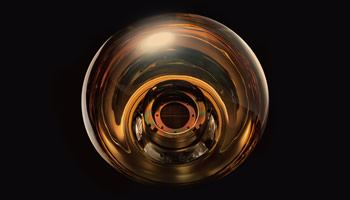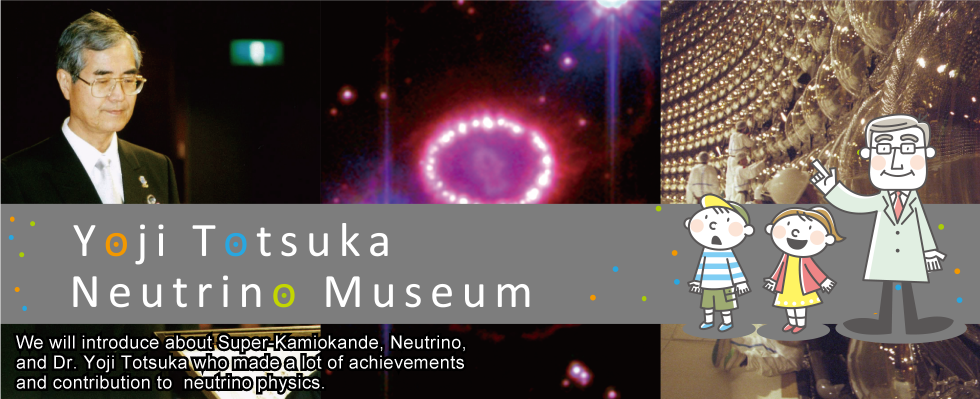- Yoji Totsuka Neutrino Museum
- Who is Yoji Totsuka?
- What did Yoji Totsuka do?
- What is the "Super-Kamiokande"?
- At the Neutrino Museum, Lets check it out! Lets experience it!
-
At the Yoji Totsuka Neutrino Museum you can see, touch, hear and learn about many things!
At the Yoji Totsuka Neutrino Museum you can see, touch, hear and learn about many things!
Experience
Seeing the Invisible ~ Cloud Chamber ~
-
Seeing the Invisible~ Cloud Chamber ~
All around us, radioactive particles are flying about invisible to the naked eye. Let's take a look at those particles using a cloud chamber. Full of alcohol vapor, a white mist is produced when charged radioactive particles interact with the vapor within the "cloud chamber". We can see 3 types of radiation: alpha rays, beta rays and another type of alpha rays emitted during the decay of radon.
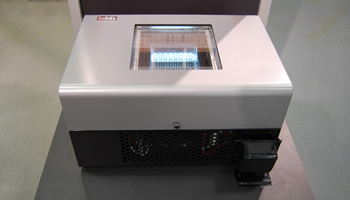
Experience neutrino oscillation with a "tuning fork".
-
Neutrino oscillation is the transformation of neutrinos. Neutrinos are both particles and waves. To understand this more easily, let's see what happens when we use "tuning forks" to produce 2 waves.
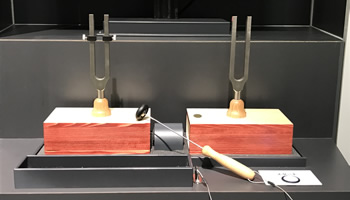
Experience Particle Acceleration! Acceleration Simulator
-
We can accelerate tiny particles invisible to the naked eye with an enormous experimental apparatus called a "particle accelerator". In a ring-shaped tunnel it can accelerate electrons and protons to nearly the speed of light and cause them to collide with each other head-on, allowing us to study the reactions from those collisions. Let's try out the simulator.
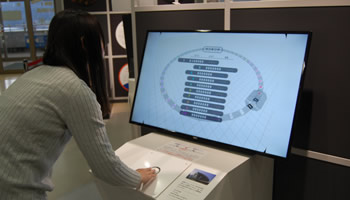
Exhibit
-
Benjamin Franklin Medal
(replica)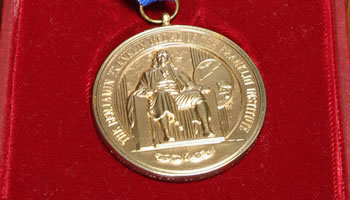
This medal commemorates American politician, physicist and meteorologist Benjamin Franklin and is awarded to researchers of physics and 6 other scientific fields for outstanding achievements. Dr. Totsuka received his in 2007.
-
2004 Order of Culture Medal
(replica)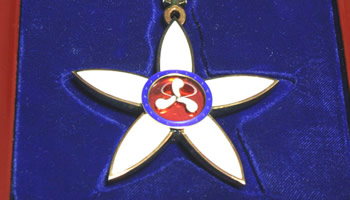
-
Honorary Fuji City Citizenship and Medal 2003 Honor (replica)
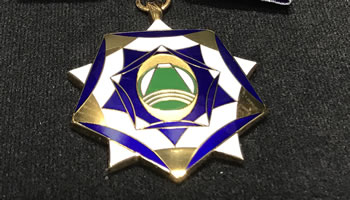
Einstein's Book (original)
-
"Einstein: His Life and Universe" (Simon & Schuster)
Ill in bed, Dr. Totsuka was unable to attend the awards ceremony to receive his Benjamin Franklin Medal. Research colleagues Dr. Hank Sobel and Dr. James Stone sent him this book in acknowledgement of his services.
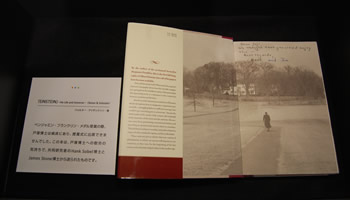
Photomultiplier Tube
-
A "photomultiplier tube" is the device by which humans were first able to detect neutrinos. When neutrinos collide with water, a very weak light (Cherenkov Light) is emitted and by using this photomultiplier tube we can change it to an electric signal and observe it on a larger scale. This is about as difficult as trying to detect the beam of a flashlight shone onto the earth from the surface of the moon.
